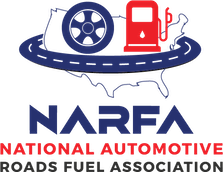The best Safety and Health Management Systems (S&HMS) involve every level of the organization, instilling a safety culture that reduces accidents for workers and improves the bottom line for managers. When safety and health are part of the organization and a way of life, everyone wins.
Frequently Asked Questions
We’ll briefly address four common management questions below, and then take a closer look at specific implementation strategies for each.
#1. What Return on Investment can S&HMS programs provide?
- Improved employee morale
- Decreased lost time
- Fewer workplace injuries and illnesses
- Lower insurance costs
- Safety culture adoption
#2. How can safety and health become part of the way my business runs?
- Combine performance standards with S&H standards
- Talk the talk and walk the walk
- Top down support
- Bottom up implementation
#3. What indicators tell me if I’m getting weaker or stronger?
- Statistical reports
- Opinion surveys
- Risk analysis
- Periodic inspections
- Process improvement initiatives
#4. What practices are best for assuring lasting success?
- Obtain management buy-in
- Build trust
- Conduct self-assessments
- Develop a site safety vision
- Develop a system of accountability and measures
- Implement recognition and rewards
- Provide awareness training
- Implement process changes
- Continually measure, communicate results and celebrate successes
Critical Elements Of An Effective Safety And Health Management System
- Employee Involvement
- Worksite Analysis
- Hazard Prevention and Control
- Education for employees, supervisors and managers
Management Commitment And Employee Involvement
- Develop and communicate a safety and health policy to all employees
- Demonstrate management commitment by instilling accountability for safety and health, obeying safety rules and reviewing accident reports
- Conduct regular safety and health meetings involving employees, managers and supervisors
- Assign responsible person(s) to coordinate safety and health activities
- Integrate safety and health into business practices (e.g., purchases, contracts, design and development)
- Involve employees in safety and health related activities (e.g., self-inspections, accident investigations and developing safe practices)
- Recognize employees for safe and healthful work practices
Worksite Analysis
- Evaluate all workplace activities and processes for hazards
- Reevaluate workplace activities whenever there are changes in processes, materials or machinery
- Conduct on-site inspections, identify hazards and take corrective actions
- Provide a hazard reporting system for employees to report unsafe and unhealthful conditions
- Investigate all accidents and near misses to determine root causes
Hazard Prevention And Control
- Eliminate and control workplace hazards (e.g., engineering controls, workstation design and work practices)
- Establish a preventive maintenance program
- Keep employees informed of safety and health activities and conditions
- Plan for emergencies (e.g., create an evacuation plan, train employees and conduct fire drills)
- Record and analyze occupational injuries and illnesses
Training For Employees, Supervisors And Managers
- Provide training on specific safe work practices before an employee begins work
- Provide additional training for new work processes and when accidents and near misses occur
- Provide refresher training on a routine basis
Read more tips about workplace safety on our blog.
Recent Posts
Why Your Small Business Might Be Over-Insuring—and What You Can Do About It
The Healthcare Crisis in Massachusetts Small businesses in Massachusetts are grappling with a healthcare system in turmoil. Layoffs, carrier losses, soaring drug costs, and limited [...]
The Importance of Chronic Disease Management in Workers’ Compensation and Workplace Safety
Chronic diseases are becoming a major issue in the workplace, making up a large share of workers' compensation claims in Massachusetts. Conditions such as diabetes, [...]
Understanding Community Rating in Health Insurance: What It Means for Your Business
Healthcare costs in New England are among the highest in the country, putting significant pressure on businesses, and in many cases are surpassing national averages. [...]




